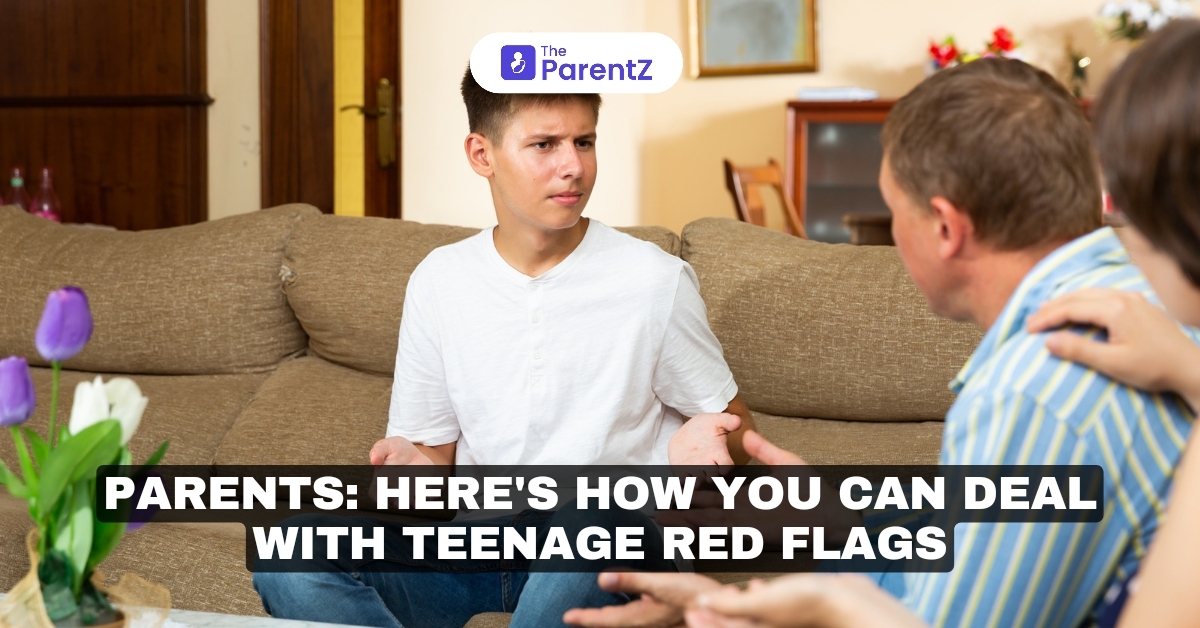It’s common to have those ‘you don’t get it’ moments during the teenage years. Teen years are typically like individuals stepping into a maze with no map. But here’s what parents should know—your teen is still trying to figure things out as likely as you are. However, amidst the dramatic changes, some behaviors may turn out to be the red flags you need to take extra care of.
According to the American Psychological Association, about 20% of teens experience mental health issues like anxiety or depression during their adolescent years.
Read this article to find out how you can tackle such transformations and deal with those teenage red flags of your child.
So What Actually Are The Teenage Red Flags?
It’s easy for parents to dismiss teenage mood swings as part of growing up, but some behaviors are a deep signal that your child requires extra attention. Here are some teenage red flags you need to watch out for.
- Sudden Withdrawal: If your usually outgoing child has become isolated and avoids family and friends, this could mean that there’s something more serious.
- Tremendous Changes in Appearance: Drastic shifts in how your teen dresses, looks, or takes care of their hygiene may indicate the internal struggles within your child.
- Poor Academic Performance: A sudden drop in grades can sometimes reflect a lack of interest in school and other underlying concerns like depression and anxiety.
- Extreme Mood Swings: Though hormones play a role, excessive anger, sadness, or mood swings could mean greater mental health concerns.
- Risky Behavior: Indulging in habits like drugs and alcohol, which could indicate emotional stress.
4 Tips To Deal With Teenage Red Flags
Here are some essential tips on how you can deal with your kid’s red flag behaviors.
- Open Communication
Communication is key, but that doesn’t mean interrogating them every time they walk through the door. Simply ask about how their day was. Though you might receive just a grunt in response, it’s okay. However, try to stay consistent in terms of communication.
The National Institute of Mental Health suggests setting aside regular family time, like weekly dinners or shared activities, where conversations can happen organically. Besides, ensure that when they talk, listen to them with patience.
- So No To Overreacting
While it’s still the most difficult approach to follow, you need to learn to not overreact at times. Teeangers—you can’t rush them, and they respond poorly to overbearing energy. Instead, approach the situation with calm. And secondly, ensure that your child knows you are there to support them. According to a 2021 study by the Journal of Adolescence, teens respond far better to parents who listen first rather than lecture.
That means even if your child sometimes comes with green hair, you just need to take a deep breath.
- Keep A Check On Social Media
Social media is the place where you teens connect and express themselves. According to a study by the Pew Research Center, 45% of teens say they are online “almost constantly,” and that can be a problem if their screen time leads to cyberbullying and self-comparison.
Here’s what you need to do—encourage open communication about what they’re experiencing online. And if their online behavior seems unhealthy, it’s time for a real conversation.
- Healthy Outlets
Teenagers feel things intensely, but all that emotional energy needs somewhere to go. According to Psychology Today, teens who are actively engaged in hobbies or sports tend to fare better emotionally and mentally. Therefore, the next time your child shows interest in something, make sure you build that interest.
Takeaway
Dealing with teenage red flags is difficult. One minute you might be thinking if it’s just a phase, but the next minute you realize if it’s the symptom of something more serious. Therefore, it is important to understand their behavior and sometimes just be the ‘cool parents’ who are trying their best.








Be the first one to comment on this story.